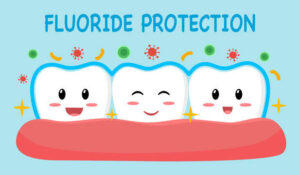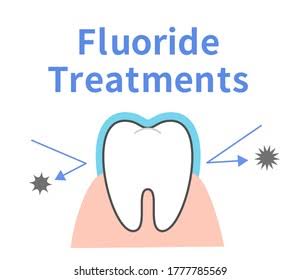
Water Fluoridation :
Fluoridation is “the upward adjustment of the fluoride ion content of a domestic water supply to the optimum physiologic concentration that will provide maximum protection against dental caries and enhance the appearance of the teeth with a minimum possibility of producing objectionable enamel fluorosis”.
Optimum Levels :
The optimum fluoride level for water in temperate climate is 1 ppm. For warmer and colder climates the amount can be adjusted from approximately 0.7 ppm to 1.2 ppm, adapted in accord with the amount of water consumed. A concentration of 1 part per million (ppm) amount to 1mg of fluoride per litre (1 mg/litre).9
Historical Juncture :

A great forward stride in the era of preventive dentistry was ushered with the epidemiologic studies of the 1930s sponsored by the United States Public Health Service and directed by Dr. T.H. Dean.
The evidence regarding the safety of water fluoridation was so convincing that the U.S. Public Health Service took the major step in artificially water fluoridating the water supply of Grand Rapids at 1 ppm on 25th January 1945. Muskegon town was kept as a control town. The town was to serve as a control town for 15 years. It did not. After 62 years the caries experience in Grand Rapids was half that of Muskegon and it ceased to be a control town.
Equipments & Chemicals for Flouridation :

The choice of equipment and of fluorides to be used will depend on
1. Costs & installation
2. Maintenance
3. Surveillance
The following general characteristics of the system need to be considered.
•The equipment must be adapted to local conditions and needs of water network.
•Equipment must be efficacious, safe & precise.
•Should have well defined precision limits.
Types of Equipment :
(a) Saturator system
(b) Dry feeder
(c) Solution feeder
(d) Venturi fluoridator system
(e) Saturation – suspension cone
Fluorides used :
(a) Sodium fluoride (NaF)
1. Used in saturator system to avoid ob- struction of gravel bed.
2. Used in granular form.
3. Available in 45 kg bags.
4. Expensive.
(b) Sodium Silico Fluoride.
1. Available in 45 kg bags.
2. Cheapest.
(c) Hydroflurosilicic acid
1. Delivered by tanker lorry with a capac- ity of 19,000 litres.
2. More expensive than sodium silico fluoride on account of transporting liquids.
Benefits of Water Flouridation :
1. Appearance of Teeth :
Teeth exposed to an optimum or slightly higher level of fluoride frequently are clear,white, shining,opaque and without
blemishes.
2. Dental caries reduction in primary and permanent teeth :
The reduction for caries for primary teeth was between 40% to 50 % and the reduction for permanent teeth was between 50 % – 60%.
3. Root Caries :
A report by Stamm and Banting shows that life long consumption of fluoridated water reduces the incidence of root caries by approximately 50%.
4 Tooth Loss :
According to Arnold F.A., there is a 75% reduction in the prevalence of extracted first molars in fluoridated areas compared with those that are non-fluoridated.
5. Malocclusion :
According to Salzman, orthodontic problems are approximately 20% less prevalent among children 6-14 years of age living in a fluoride area compared to those living in areas without the benefits of fluorides. This difference is possibly due to fact that the loss of first permanent molars is minimal in fluoride area.
6. Interproximal and coronal caries :
There is about 95% less prevalence of inter proximal dental caries and a reduction of 60% coronal caries in fluoridated communities compared to those of non-fluoridated.
7. Economy :
Among other means of fluoride usage – fluoride tablets, school dentifrices, prescription fluorides, water fluoridation is most economical in reducing the cost of public health expenditure.
Feasibility :
Water fluoridation procedure is feasible only if
1. There is a municipal water supply reaching a reasonable number of homes.
2. People drink this water rather than water from individual wells or rainwater tanks.
3. Suitable equipment is present.
4. Supply of fluoride is assured.
5. Workers available in the water treatment plant to maintain the system & keep records.
6. Money should be available for initial installation and running costs. Fluoridation is feasible but is not implemented for political reasons. In view of the good results achieved in those countries where it has been used extensively for many years, water fluoridation must always be considered as a public health measure. Not only is it safe, but water fluoridation is by far the most effective & efficient method of bringing the benefits of a continuous low concentration of fluoride to a whole community.
The reasons for rejecting a proven benefit could be
1. Ignorance and confusion on the part of the public about the dental health benefits.
2. Ambivalence of the public towards science and its by-products.
3. Mis-representation of the scientific and technical information involved.